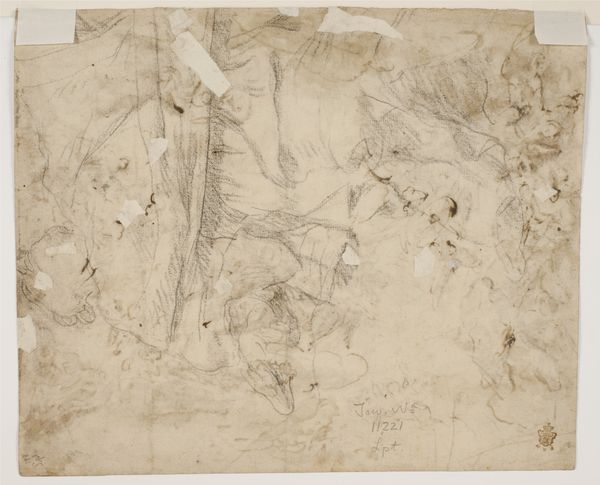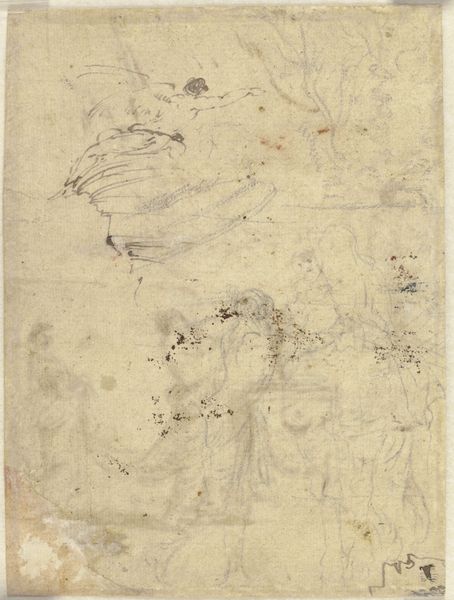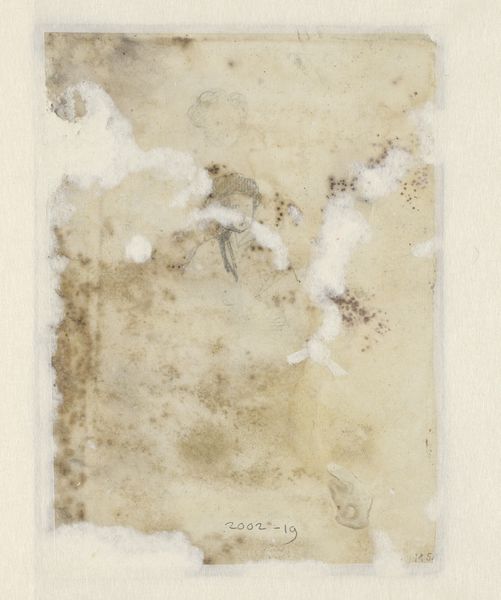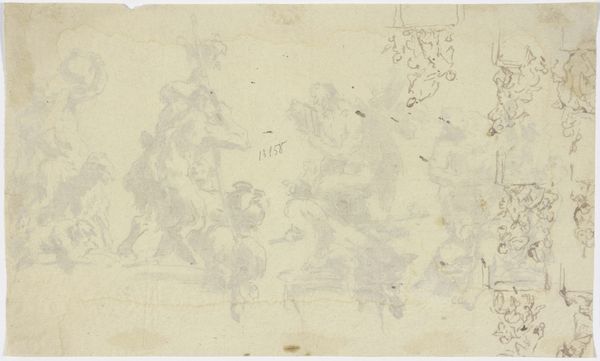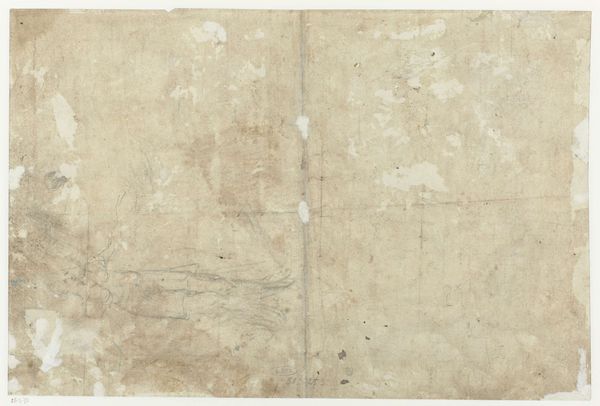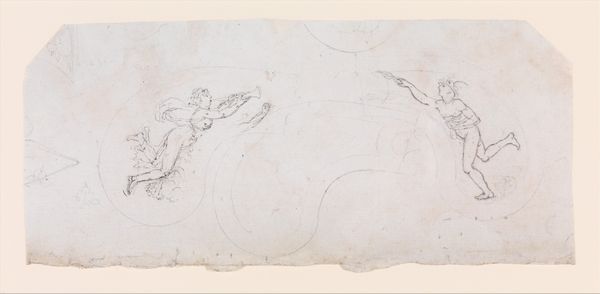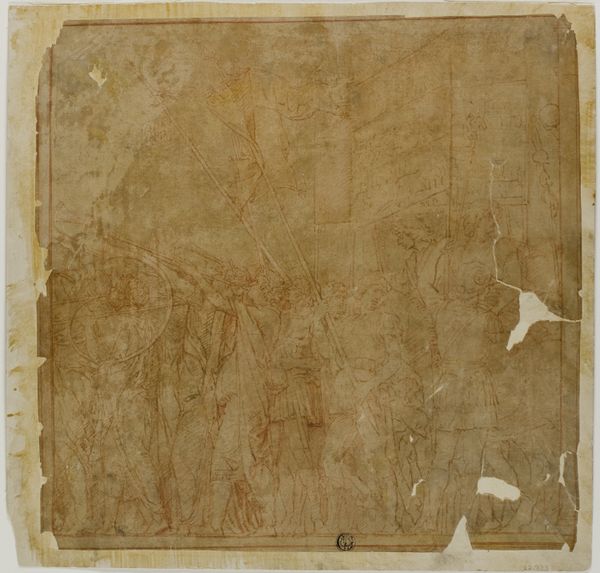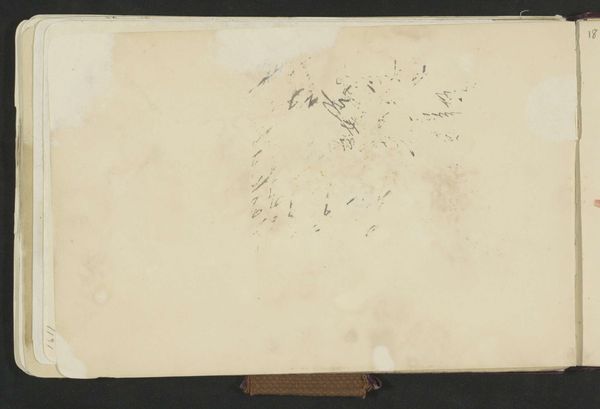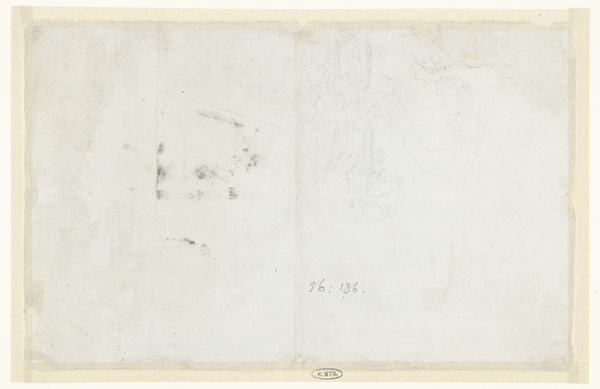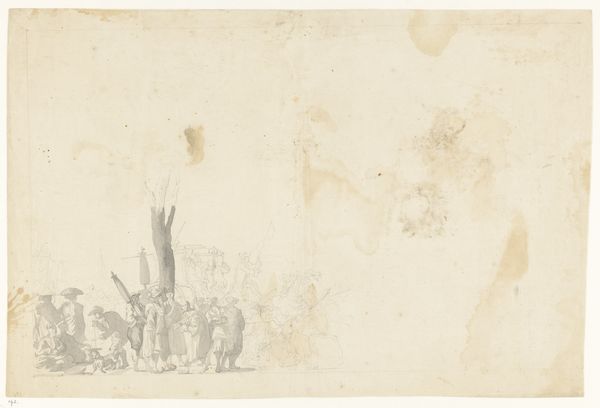
drawing, paper, ink
#
portrait
#
drawing
#
paper
#
11_renaissance
#
ink
#
mixed media
Dimensions: 198 mm (height) x 272 mm (width) (bladmaal)
Curator: This delicate drawing, attributed to Antonio Aliense, currently resides here at the SMK, Statens Museum for Kunst. Dating sometime between 1556 and 1629, it’s titled "Sketch of a bearded face” and is executed in ink on paper. Editor: Well, "delicate" is one word. I immediately notice a striking juxtaposition: the detail of those focused eyes and strong beard set against what appears to be the very rough outline of something larger, like a whole crowd of people in the background. There's a tension in the incomplete nature of it that I find intriguing. Curator: I’m drawn to that tension, too. The way the artist has captured a single face within this scene is fascinating. Portraits in that era weren’t just about likeness; they communicated status and even moral character. Note the contrast of the prominent bearded man to the figures with soft features who may serve him or seek his wisdom. This placement is ripe with the symbolism of power and virtue. Editor: Interesting. From a social perspective, portraiture was really gaining traction as a signifier for the emerging merchant class alongside the traditional aristocracy, wouldn't you say? The desire to immortalize oneself visually became almost a democratic act of self-fashioning during the Renaissance, but look at the medium chosen here, drawing with ink on paper, much less costly than paintings or sculptures and able to render likeness efficiently! This, the ‘sketch,’ seems even more spontaneous and modern than many grand displays we see! Curator: That spontaneous energy reflects Aliense’s ability to tap into deeply rooted visual narratives and cultural aspirations of the day. Think of the Renaissance obsession with classical ideals, these stoic faces of philosophers and rulers... He subtly taps into this historical visual repertoire. The way those ink lines define the shape of the nose, the eyes - that speaks of intellect and fortitude. Editor: Right. But I also see something fleeting, perhaps less fixed. The sketch allows the subject to be more relatable. It's as if we've caught the man in a private moment amidst the social theatre! The rawness almost bridges the distance between us and his historical context, something like “historical empathy” where the viewer recognizes the inner world beyond simply admiration. Curator: I agree, and seeing that emotion in his gaze is very powerful. The choice to isolate this face among a crowd suggests an awareness of inner life against the backdrop of public duty. This drawing doesn't simply record; it asks questions about how these ideas are presented, about the human element within societal structures. Editor: Ultimately, a Renaissance sketch offers a surprisingly candid and reflective meditation on portraiture, its cultural weight, and its intrinsic capacity for personal, deeply humane connections beyond societal expectations. Curator: Exactly. It resonates even today, revealing how art is more than meets the eye, a subtle portal of seeing that is both ancient and timeless.
Comments
No comments
Be the first to comment and join the conversation on the ultimate creative platform.
